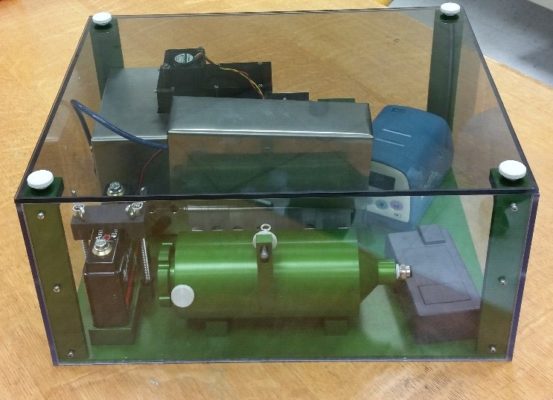PACS (Portable Aerosol Collector & Spectrometer)
Exposure to engineered nanomaterials (NMs)—materials composed of particles with features smaller than 100 nm—represents a new inhalation hazard for which there are no standard measurement methodologies or applicable occupational exposure limits (OELs). The industrial hygiene (IH) sampling paradigm relies on the ubiquitous use of filter sampling equipment to measure mass-based personal exposures that are then compared to mass-based OELs. Nano-featured materials can react with the human body in ways other particles do not because they have extremely high specific surface areas resulting in exceptionally high chemical activity and size-dependent behavior. When inhaled, NMs can elicit adverse cardiopulmonary health outcomes (e.g., inflammation, progressive pulmonary fibrosis, blood platelet activation, plaque formation, and thrombosis) that scale more closely with dose expressed as particle number or surface area rather than mass. Consequently, the measurement of NMs fit poorly within the pre-existing IH sampling paradigm. Interim guidelines from the National Institute of Occupational Safety and Health (NIOSH) advise the use of both real-time monitors and electron microscopy to assess the presence of airborne NMs in workplaces. However, real-time concentration monitors are ill-suited for personal sampling and cannot distinguish NMs from other airborne particles. Electron microscopy of filters collected with conventional personal samplers can make this distinction, but this analysis is typically expensive and only qualitative. Chemical analysis of particles (e.g., metals analysis by inductively coupled plasma optical emission spectroscopy) could be used to detect NMs separate from background particles but devices to collect particles by size are not available for use as personal samplers for particles smaller than 300 nm. Without standard measurement methods, exposure assessment tools Consequently, the status quo in assessing are inadequate to evaluate the health risks posed by personal exposure to engineered NMs in the workplace and deployed environments is to use an assembly of methods that were not specifically designed for the task and have severe limitations.
Spectral Energies in collaboration with University of Iowa and TSI, Inc. developed an integrated PACS (Portable Aerosol Collector and Spectrometer) device to assess personal exposures to nanomaterials through real-time, size-resolved information on particle concentration by number, surface area, and mass. This device has been field-tested under a variety of environments such as in gun shooting ranges and industrial facilities.
For further information, contact us via email (contact@spectralenergies.com) or by phone (937-266-9570/937-902-6546).

